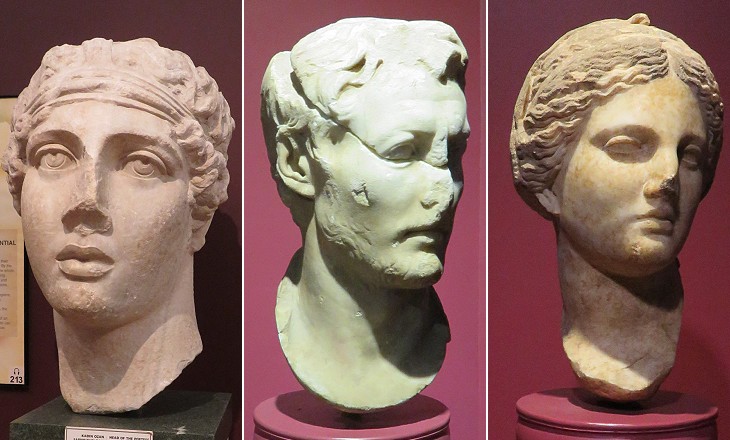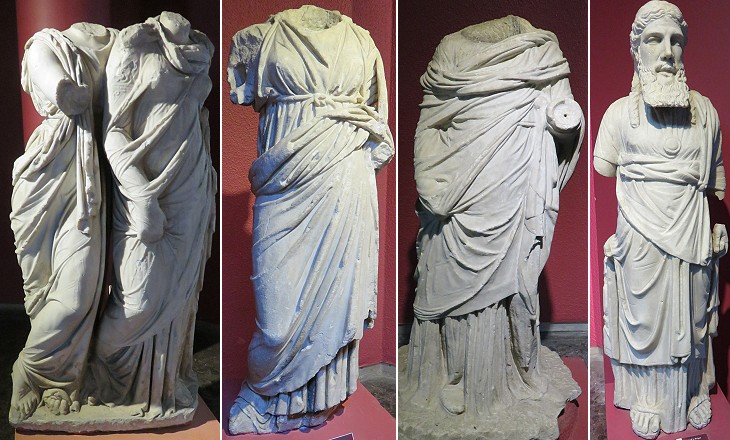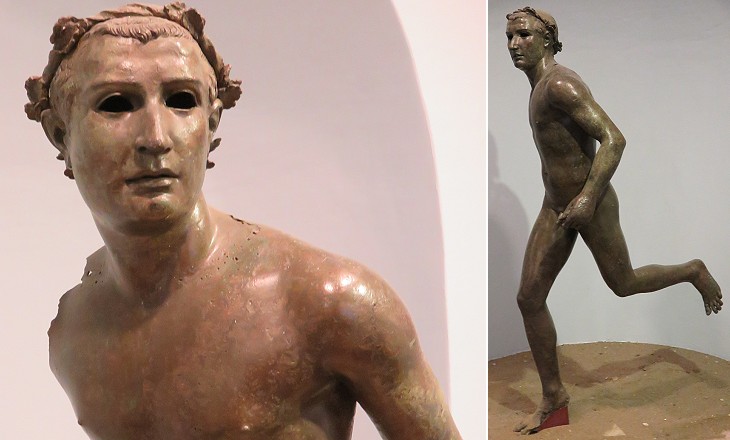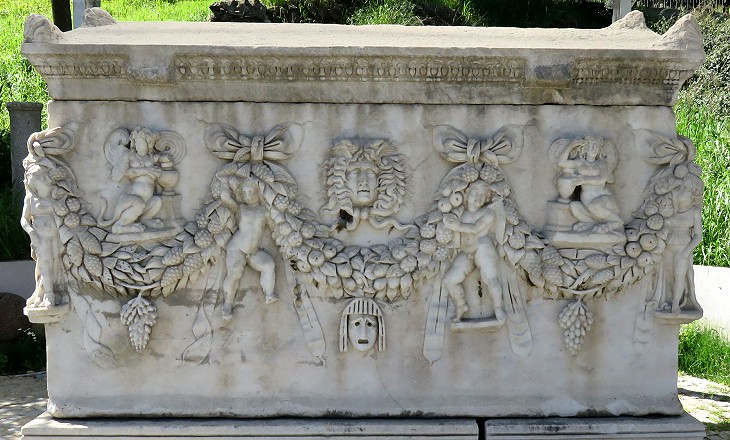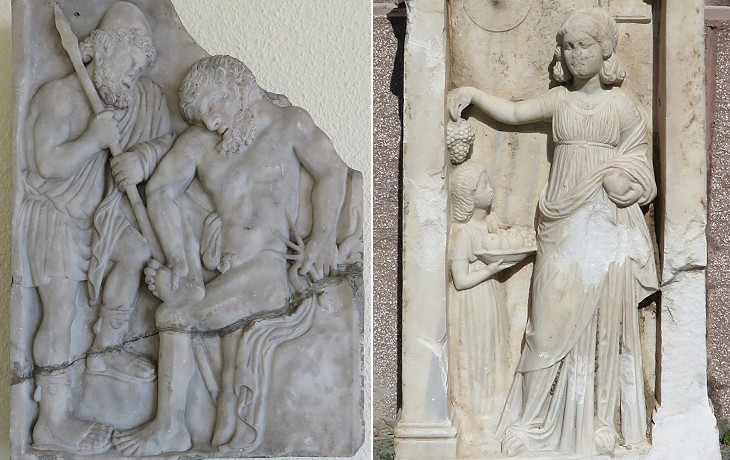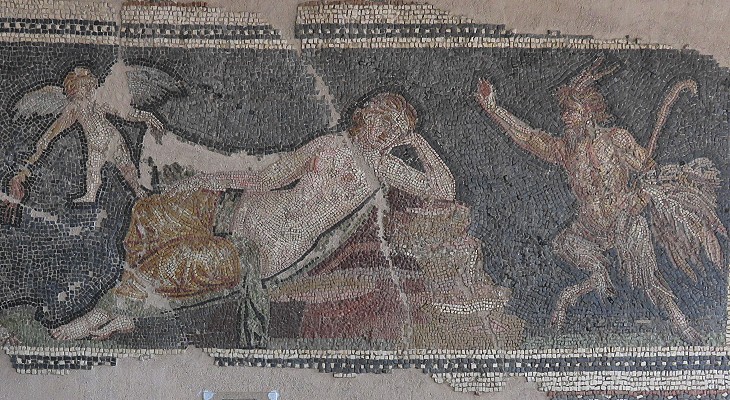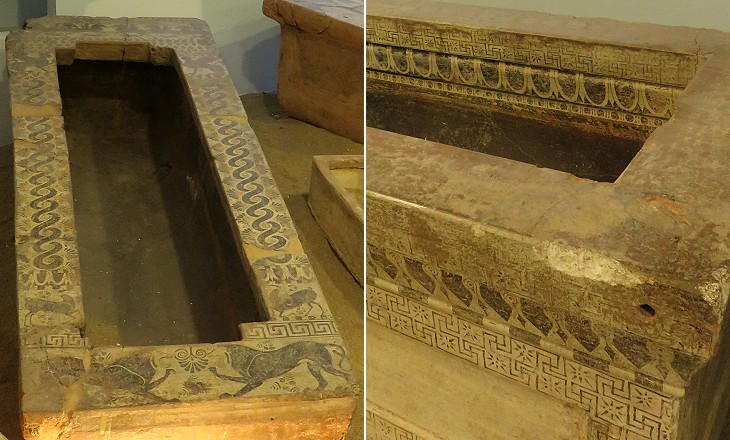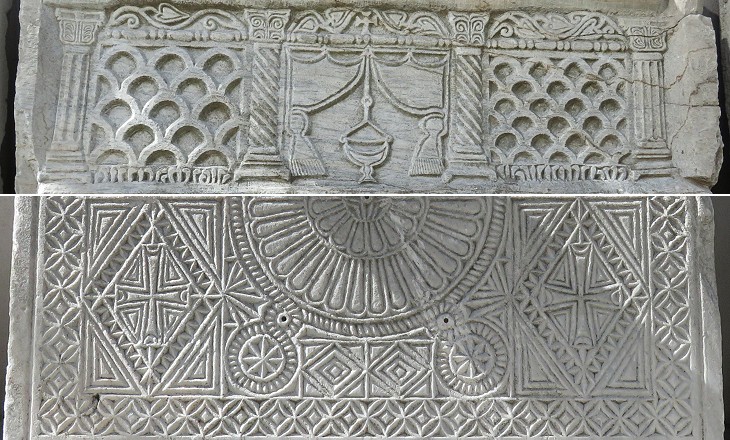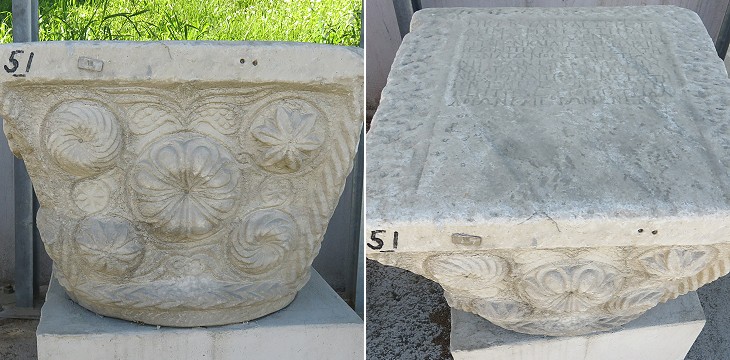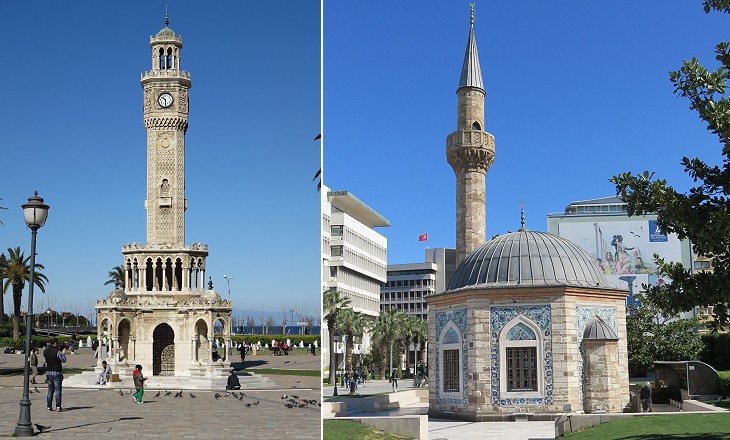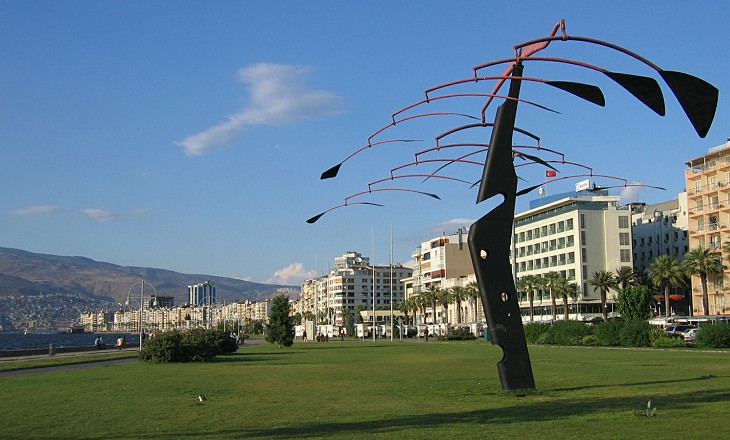  What's New! Detailed Sitemap All images © by Roberto Piperno, owner of the domain. Write to romapip@quipo.it. Text edited by Rosamie Moore. Page added in August 2015. |
 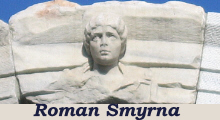 - The Archaeological Museum - The Archaeological Museum(relief portraying Annia Faustina, Marcus Aurelius' wife in the market portico) You may wish to see a page on Roman Smyrna first.
Ottoman Sultans were generally aware of the historical and artistic value of the remains of antiquity which existed in their vast Empire. They used marble columns and capitals to embellish their mosques. Ancient statues and reliefs portrayed human beings could have been considered "idols" and therefore destroyed, but very rarely the Sultans felt compelled to follow this strict interpretation of Islam. They often made use of these works of art in their "foreign policy" by sending them as gifts to European monarchs or by allowing consuls to ship them home. Eventually in 1869 these practices were discontinued and an Archaeological Museum was opened in Constantinople. The foundation of the Republic of Turkey in 1923 brought about the move of the capital to Ankara and the creation of archaeological museums at regional level. That of Smyrna/Izmir was established in 1924. In 1984 the collections were moved to a new building on a hill enjoying a commanding view over Kordon, the modern sea promenade of Izmir. They include some works of art found during the reconstruction of the town, following the fire which greatly damaged it in 1922.
The collections were enriched with works of art found in locations spread over a vast territory around Izmir in addition to those found in town. In particular the museum houses important exhibits from Ephesus (e.g. a statue of Antinous from the Gymnasium of Vedius), Afrodisias and Miletus.
The use of bronze allowed sculptors to make statues with figures in action which were more difficult to make in marble. Bronze however was a very precious material and very few ancient bronze statues have not been melted to reuse the metal alloy. The "Running Athlete" was found at a small port, where perhaps it was to be shipped to Rome. The young man is crowned with a flower wreath: With the flowers Diagoras has had himself crowned twice, and at the renowned Isthmus four times, in his good fortune, and again and again at Nemea and in rocky Athens. Pindar - Olympian Ode VII - For Diagoras of Rhodes - Translation by Diane Arnson Svarlien.
The garden surrounding the building houses many interesting sarcophagi with a rich decoration. One of them (from Ephesus) is shown in a page on Roman funerary practices. They generally belong to the IInd century AD, a period of great prosperity in this and other regions of the Roman Empire.
Fragments of sarcophagi and small gravestones provide the museum with a fine collections of reliefs. Very often they depict mythological events. The Labours of Hercules can be easily identified, but other reliefs are more puzzling and in the lack of inscriptions the persons they portray can only be guessed. Gravestones occasionally depict moments of domestic life and pay special attention to hairstyles and clothes.
At the time of my visit in April 2015 halls housing some large mosaics were closed for renovation (in a previous visit in 2006 taking photographs of them was not allowed), but some small mosaics were on display in other halls, including one found at Phocaea.
Clazomenae was one of the most important towns of Ionia in the archaic period, thriving in pottery painting. In 1920-921 a number of clay sarcophagi were found by Greek archaeologists (the region was then occupied by the Greek army). Some of them are at the Archaeological Museum of Athens, others at the Louvre Museum in Paris and those found in later periods in Izmir. Their flat rims are decorated with elaborate paintings, which sometimes cover the whole box.
The garden houses a large number of reliefs of the Byzantine period and a few from the period when Smyrna was a possession of the Knights of Rhodes.
Wandering about the Museum
In September 1922 during the final stages of the war between Greeks and Turks for control of western Anatolia a fire destroyed the core of the city. Two small monuments at the southern end of the harbour (near today's Kordon waterfront) were spared and have become iconic landmarks of modern Izmir. The Clock Tower was donated by German Emperor Wilhelm II and it was designed by French architect Raymond Charles Péré who spent most of his life in Turkey. The small mosque was built by a local patroness in 1755 and it was decorated (at a later period) with tiles from Kutahya.
Return to Roman Smyrna. Clickable Map of the Ionian and Aegean Seas with links to other locations covered in this website (opens in a separate window) Clickable Map of Turkey showing all the locations covered in this website (opens in another window).  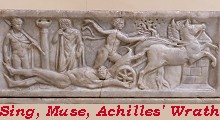 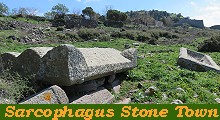 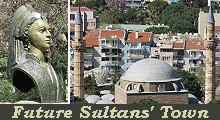
|
